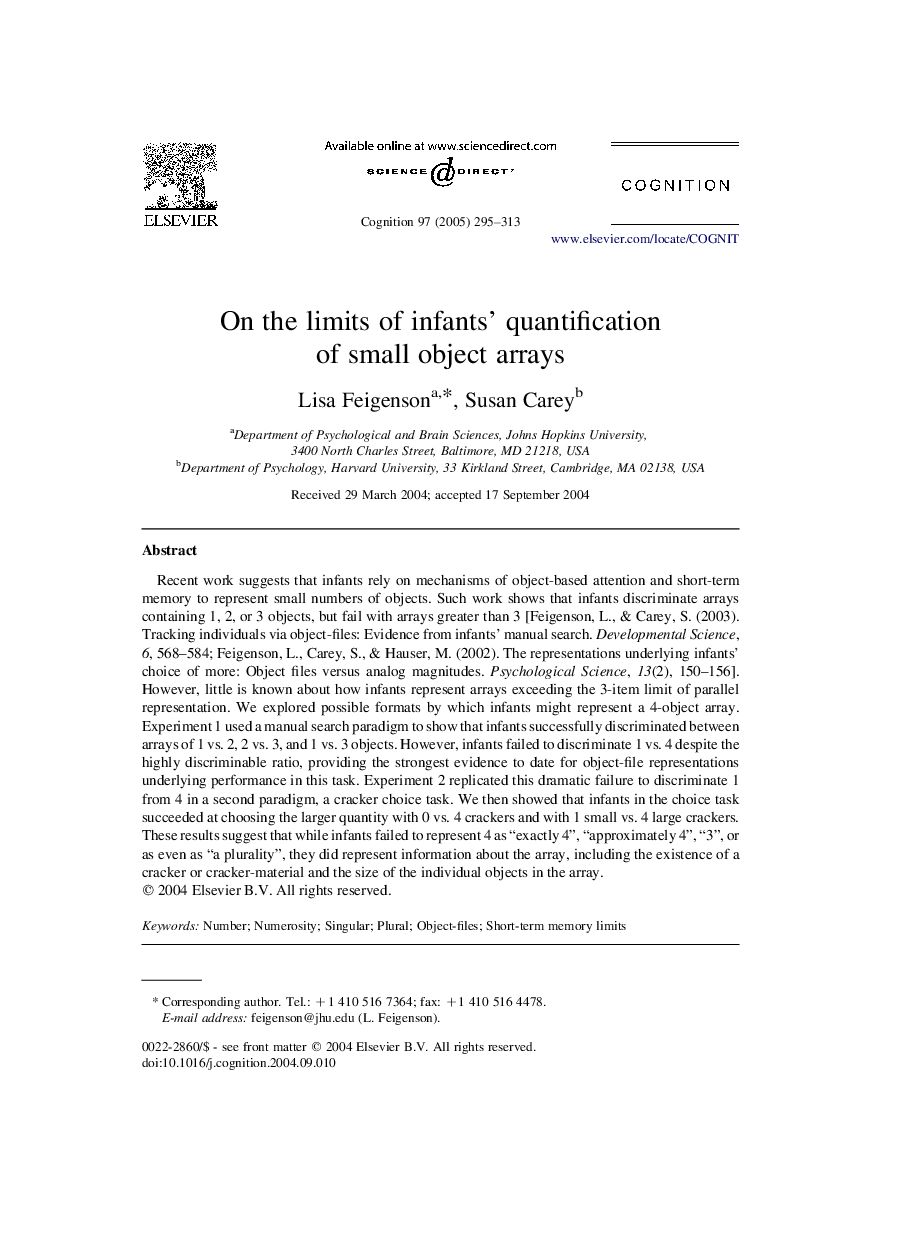| کد مقاله | کد نشریه | سال انتشار | مقاله انگلیسی | نسخه تمام متن |
|---|---|---|---|---|
| 10458060 | 921972 | 2005 | 19 صفحه PDF | دانلود رایگان |
عنوان انگلیسی مقاله ISI
On the limits of infants' quantification of small object arrays
دانلود مقاله + سفارش ترجمه
دانلود مقاله ISI انگلیسی
رایگان برای ایرانیان
موضوعات مرتبط
علوم زیستی و بیوفناوری
علم عصب شناسی
علوم اعصاب شناختی
پیش نمایش صفحه اول مقاله

چکیده انگلیسی
Recent work suggests that infants rely on mechanisms of object-based attention and short-term memory to represent small numbers of objects. Such work shows that infants discriminate arrays containing 1, 2, or 3 objects, but fail with arrays greater than 3 [Feigenson, L., & Carey, S. (2003). Tracking individuals via object-files: Evidence from infants' manual search. Developmental Science, 6, 568-584; Feigenson, L., Carey, S., & Hauser, M. (2002). The representations underlying infants' choice of more: Object files versus analog magnitudes. Psychological Science, 13(2), 150-156]. However, little is known about how infants represent arrays exceeding the 3-item limit of parallel representation. We explored possible formats by which infants might represent a 4-object array. Experiment 1 used a manual search paradigm to show that infants successfully discriminated between arrays of 1 vs. 2, 2 vs. 3, and 1 vs. 3 objects. However, infants failed to discriminate 1 vs. 4 despite the highly discriminable ratio, providing the strongest evidence to date for object-file representations underlying performance in this task. Experiment 2 replicated this dramatic failure to discriminate 1 from 4 in a second paradigm, a cracker choice task. We then showed that infants in the choice task succeeded at choosing the larger quantity with 0 vs. 4 crackers and with 1 small vs. 4 large crackers. These results suggest that while infants failed to represent 4 as “exactly 4”, “approximately 4”, “3”, or as even as “a plurality”, they did represent information about the array, including the existence of a cracker or cracker-material and the size of the individual objects in the array.
ناشر
Database: Elsevier - ScienceDirect (ساینس دایرکت)
Journal: Cognition - Volume 97, Issue 3, October 2005, Pages 295-313
Journal: Cognition - Volume 97, Issue 3, October 2005, Pages 295-313
نویسندگان
Lisa Feigenson, Susan Carey,